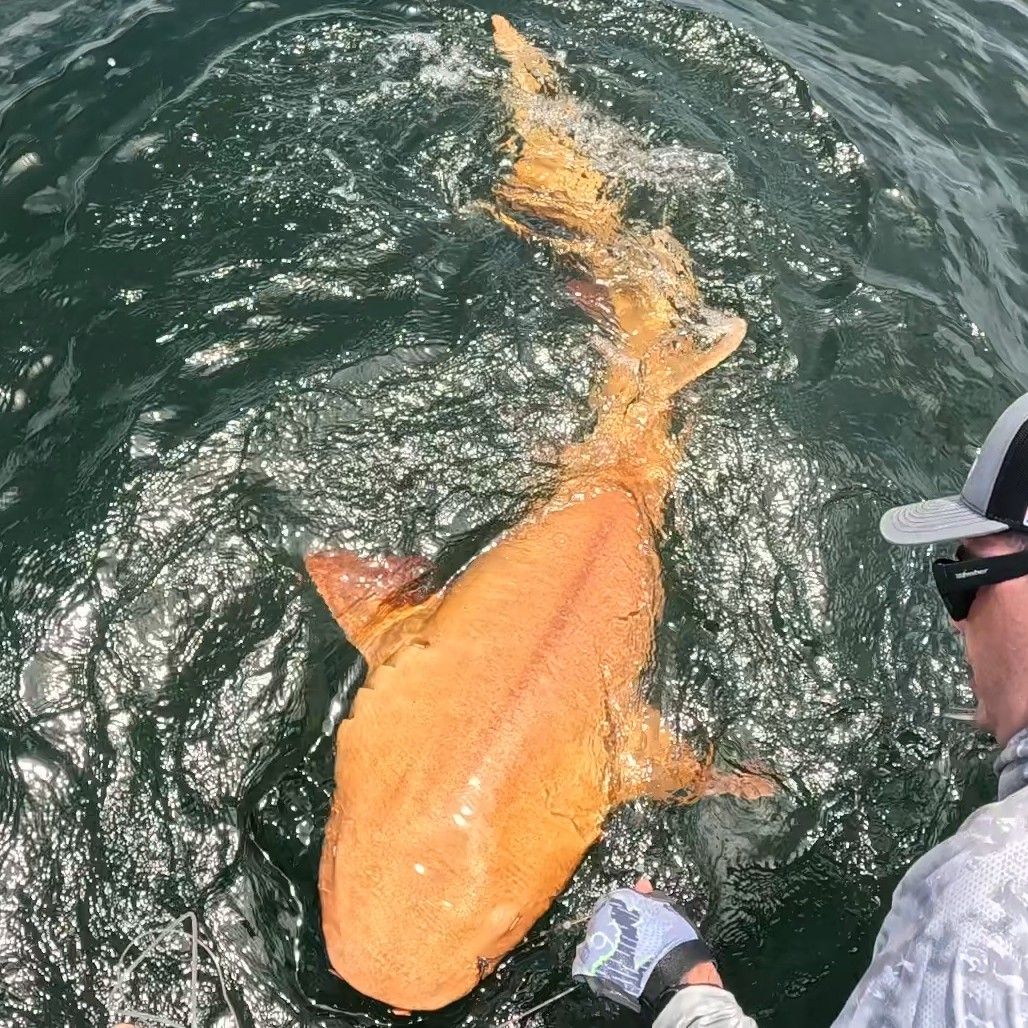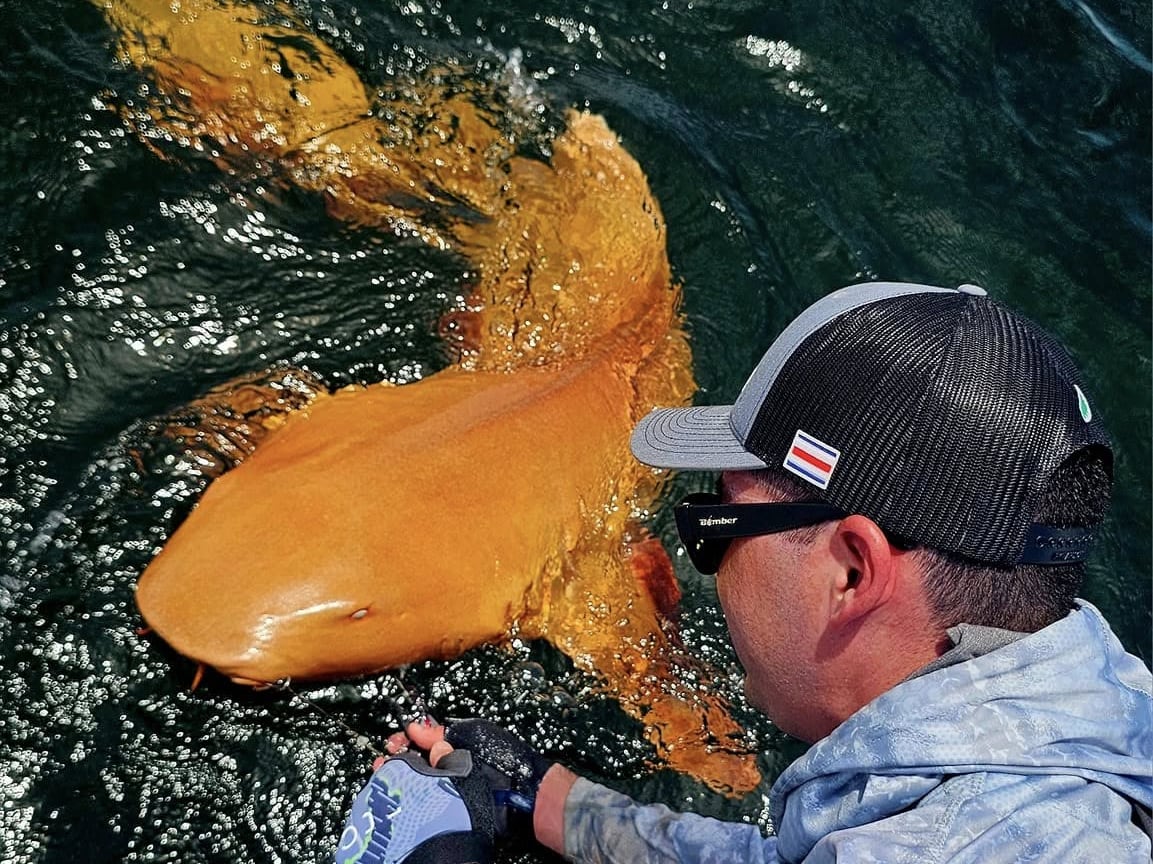ORNAGE SHARK Found Off Costa Rica, A Stunning Genetic Mystery of the Ocean
ORNAGE SHARK sightings have left marine biologists in awe after divers off the coast of Costa Rica encountered an unusually bright orange shark gliding through the waters near Tortuguero. At first, many believed it was just a lighting illusion caused by the sun hitting the water but scientists soon confirmed it was very real.
The shark’s striking orange hue comes from a rare combination of xanthism, a genetic trait that enhances yellow and golden pigments, and partial albinism, which gives her distinctive pale eyes. This mix of traits has never before been recorded in any known shark species, making this discovery a first in marine science.
Measuring around two meters in length, the shark’s appearance marks a historic moment for ocean researchers. Experts say it’s a vivid reminder that, even in 2025, the sea still holds secrets waiting to be uncovered.
ORNAGE SHARK, Nature’s Unseen Color Palette Beneath the Waves
The ORNAGE SHARK discovery has sparked fascination among marine scientists and nature lovers worldwide. The combination of xanthism and albinism is extremely uncommon. Xanthism causes an overproduction of yellow pigment, while albinism reduces melanin together creating the shark’s bright orange-gold tone.
According to marine biologists, such a color mutation doesn’t just make the animal unique but also raises questions about how pigment changes affect survival and behavior in deep-sea environments. Sharks rely heavily on camouflage for hunting and protection, and a bright hue could make this one more visible to both prey and predators. Yet, against all odds, she has survived and thrived, showing nature’s remarkable adaptability.
Researchers from the Costa Rican marine institute have begun documenting this shark through underwater photography and genetic analysis. They believe this specimen could help unlock new information about pigment development in marine life and how environmental conditions may trigger such rare traits.
Local divers described the moment of discovery as surreal. “It looked like a flash of sunlight moving under the waves,” one diver shared. “At first, we thought it was a reflection, but as it came closer, we realized it was a shark completely orange, like something out of a dream.”
ORNAGE SHARK Discovery Reminds Us How Little We Know About the Ocean
While scientists have identified over 500 species of sharks, the ORNAGE SHARK is a powerful reminder of how little we truly know about the vast underwater world. More than 80% of the ocean remains unexplored, and every new discovery like this brings us closer to understanding how life adapts in extreme conditions. Also Read: PERFORMATIVE CHARITY: W Korea’s Gala Draws Backlash for Missing Its Real Purpose in 2025
Experts say such genetic variations might occur more often than we realize, but spotting them is extremely rare because these creatures often live far from human activity. The fact that this shark was seen in shallow waters near Tortuguero makes the encounter even more unusual.

Environmentalists also hope the discovery sparks renewed interest in marine conservation. Sharks play a vital role in maintaining ocean ecosystems, yet many species are at risk due to overfishing, pollution, and climate change. This event could inspire stronger protection efforts for marine biodiversity across the region.
A Reminder That the Ocean Still Holds Surprises
The appearance of the ORNAGE SHARK isn’t just a biological marvel it’s a symbol of hope and curiosity. It shows that, despite centuries of exploration, Earth’s oceans continue to surprise and humble us.
View this post on Instagram
As scientists continue to study the shark’s DNA and environment, they believe this finding could lead to new insights into evolution, adaptation, and environmental resilience. The ocean, it seems, still has stories left to tell and some of them shimmer in gold.
Conclusion
The discovery of the ORNAGE SHARK near Costa Rica is more than just a scientific milestone; it’s a reminder of how alive and mysterious our planet remains. With its rare color and fascinating genetics, this shark has captured the imagination of researchers and ocean enthusiasts alike proving once again that nature always finds extraordinary ways to amaze us.

